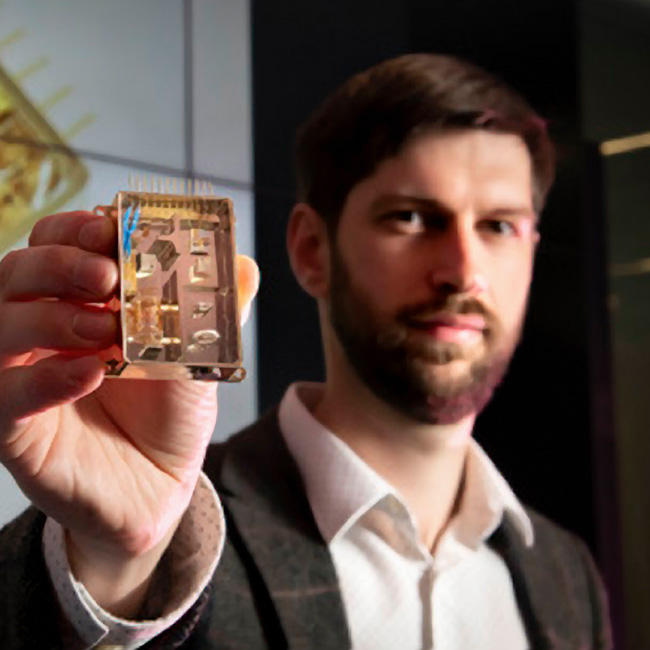CUSTOMER SUCCESS STORY
Fraunhofer CAP: High-performance Compact Tapered Amplifiers for Sensing Local Gravity Gradients
The Challenge
There is a universal need for a practical and economic tool to measure local gravity gradients with high sensitivity for applications including finding sinkholes, locating old pipelines and mapping oil field depletion. Researchers at the Quantum Technologies Business Unit at the Fraunhofer Center for Applied Photonics (Glasgow, UK) are currently targeting the use of atom interferometers as a portable solution in a collaborative effort with industrial partners Alter Technology TÜV Nord UK Ltd.
Dr. Loyd McKnight is head of the Quantum Technologies Business Unit and explains, “We want to apply our expertise in laser systems for atom interferometry to demonstrate how a portable system can be created.” In atom interferometry a small cloud of super-cold atoms (e.g., rubidium) is created in a vacuum container using laser cooling. These atoms are affected by local gravity and by preparing their states with ultra-stable lasers we can use their wave-like behavior to perform sensitive measurements. McKnight adds, “Taking this established technique from a laboratory phenomenon to a practical field instrument is a huge challenge.” He notes that operating the atom interferometer requires very well-behaved laser beams with Watts of power, narrow stable linewidths, and low amplitude and phase noises. These lasers can be complex, expensive, and bulky, hardly the ideal components for use in a portable economic gravity sensor!
The Solution
There are specialty diode lasers called distributed feedback (DFB) devices that are widely used in telecom applications and can deliver low-noise output from a little package. They can be actively and inexpensively stabilized, in this case by “locking” their output to a low-cost cell of rubidium vapor. However, with just a few tens of milliwatts, DFBs simply don’t have the power needed for this application.
Fortunately, the Fraunhofer CAP team found the perfect solution in the form of tapered amplifier chips from Coherent. These devices use a novel chip design that delivers the high-quality optical performance of a small chip with the high power of a larger chip. McKnight explains, “We can now get the laser beam performance that our gravity sensor requires by combining a DFB with one of these tapered devices in a conventional master oscillator power amplifier (MOPA) arrangement. Because these tapered chips offer high-quality amplification, the final MOPA output retains all the optical characteristics of the stabilized DFB oscillator, including a good beam quality and a narrow linewidth but with the Watts of power we need. And with a high-performance laser consisting of just two small diode chips, the result is ideal for a compact portable setup with low power consumption.”
The Result
The team has successfully cooled and trapped over 3×108 Rubidium atoms with a repetition rate of >1 Hz with this laser arrangement, which meets the requirements for the proposed gravity sensor. They are now pressing on to further reduce the size, weight and power of the system. McKnight concludes, “This same laser-based quantum engine could be used for inertial geolocation sensing, e.g., by aircraft and submarines, but with better long-term absolute accuracy than fiber gyros. We are working with collaborators to demonstrate this technology in the field.”
“Because these tapered chips offer high-quality amplification, the result is ideal for a compact portable setup with low power consumption."
— Loyd McKnight, Head of Business Unit, Quantum Technologies at Fraunhofer Centre for Applied Photonics, Glasgow, UK



Figure 1. The tapered amplifier chip is a compact device that can boost the power of diode lasers while retaining their low-noise characteristics.